The knock comes a few moments after the wake-up call. A light rapping on the door, followed by the ringing of the buzzer. The evening before, you’d landed in Berlin at the brand-new Waldorf=Astoria Berlin; you cinch your robe and open the door. “Guten morgen,” murmurs a willowy young woman attired in a skin-tight, dove gray ensemble, her dark hair in a chignon. She’s bearing a silver tray and pitcher – and the cloth bag with the shoes you left out to be polished last night. “May I come in?” You nod and watch in a kind of subdued, sleepy awe as she places your shoes on the chaise before pouring your coffee from the silver pitcher. And in that moment, her elegant body silhouetted in the semi-darkness, her long legs tapering to a pair of four-inch stilettos, the silver pitcher in her hand, her lips barely parted, you realize anew why Berlin is synonymous with desire.
It was fifty years ago, in June of 1963, that JFK gave his famous “Ich bin ein Berliner” speech, which soon became known as the “I am a donut” speech, thanks to the iconic jelly-filled pastry that goes by the name of “Berliner” throughout Germany. Donut or Berliner, the world was charmed by JFK’s embrace of Germany’s largest city, of which 80% had been decimated by WWII.
At that point in history, divided by the Wall, Berlin was the broken heart in the middle of Communist Germany. Once the Wall fell in 1989, the reunification of the city commenced: an ongoing evolution of a city whose unofficial slogan has been “Berlin is always becoming.”
Nine times as large as Paris, with 10% more area than New York City, Berlin is a vast city of 3.5 million people spread across 344 square miles. The lengthy Cold War and the nearly thirty-year lifespan of the Wall resulted in a surfeit of cultural institutions as both East and West Berlin sought to assert their cultural superiority. With 175 museums and 960 bridges (more than Venice and Stockholm combined), and a third of the city given over to green spaces and bodies of water, Berlin is a smorgasbord of urban pleasures. It’s no wonder that Berlin has become the third most visited city in Europe.
What you notice most readily about Berlin in 2013 is the civilized calm of a 21st-century city reclaiming its sense of place after the 20th-century storms. Throughout the Nineties, the area around Potsdamer Platz was the largest construction site in Europe and so notable for its skyline of building cranes that in 1996 Daniel Barenboim conducted a “dance of the cranes” to Beethoven’s Ninth Symphony.
Now that the “Times Square of Berlin” has been completed in Potsdamer Platz, the cranes have moved to West Berlin, which is in the midst of a massive influx of construction cash. What was once the Danish Embassy is now the 5-star luxury property Das Stue. The brand-new Waldorf=Astoria Berlin, which opened in January 2013, will be followed by the renovation of the Zoo Palace, one of the city’s premier movie palaces, alongside the restoration of Kaiser-Wilhelm-Memorial Church.
With 13 Michelin-starred restaurants, more than any other German city, Berlin also has an abundance of 5-star hotels (23, at last count), where in the breakfast rooms, there’s almost always an Aschenbach – and a Tadzio.
Ever since Magnus Hirschfeld founded the world’s first homosexual organization in 1897, Berlin has exerted a magnetic, magical pull for gay people around the world. Anyone who has read Christopher Isherwood’s novels or seen Bob Fosse’s masterful “Cabaret” knows that Berlin in the Twenties was a haven for the LGBT community.
Berlin‘s fabled tolerance and open-mindedness was tested by Hitler’s rise to power 80 years ago – and throughout 2013, Berlin has adopted the theme “Diversity Destroyed: Berlin Before and After 1933” in order to communicate the importance of tolerance, openness, and diversity. Positioned at historical locations all over the city, an open-air exhibition utilizes 120 massive pillars and 200 portraits to depict the overwhelming tragedy during the years 1933-1938 – and the ensuing loss of cultural diversity.
Apart from the aberrant chapter during the Third Reich, Berlin has maintained its global reputation as a bastion of diversity and inclusion. Currently, nearly half a million residents of Berlin hold foreign passports, making the city one of the most multi-cultural cities in Europe, with neighborhoods as diverse as the LGBT community – and equally alluring.
Berlin‘s extensive mass transit system encompasses trains, subways, trams, buses, and ferries (as well as an abundance of taxis, which are relatively inexpensive) – all of which help to make the magnitude of Berlin manageable. As with all great cities, one of the best ways to learn Berlin is by walking its neighborhoods.
As you wander the city, you can’t help but notice the colorful cornucopia of German youth. As tall and willowy as the parks’ slender lindens, as brightly garbed as trees in autumn, young Germans walk with the confidence of a city on the rebound. Since 1950, the city and the Tiergarten have been reforested; today, the thriving trees – and German youth – serve as metaphors for Berlin’s growth and resilience.
A short walk from the Waldorf=Astoria Berlin, the Helmut Newton Foundation (aka Museum for Photography) is filled with the work of one of the world’s most influential fashion photographers. Born in Berlin, Newton created groundbreaking (and controversial) images throughout the second half of the 20th century that seared into memory and shaped the evolution of fashion photography. Following in the footsteps of Horst B. Horst and the Russian-born George Hoyningen-Huene, Newton cemented the subliminal association between fashion and sex. After a couple hours with Herr Newton, it’s likely that you’ll see sex and desire everywhere you look in Berlin.
Around the corner from Hotel Concorde Berlin, another 5-star luxury property in West Berlin, is Kurfurstendamm, often called KuDam, the “Fifth Avenue of Berlin.” Home to Kaufhaus des Westens (aka KaDeWe), which is considered the Harrods of Berlin because of its massive sixth floor food hall, Kurfurstendamm is lined with the usual retail suspects and luxury European boutiques, as well as sumptuous restaurants such as the newly-opened grand brasserie, Grosz.
After a couple nights in tony Charlottenburg, consider relocating to Schöneberg, one of Berlin’s most historically gay neighborhoods. The home of Berlin’s first gay bar in 1977, Schöneberg was also home to Hildegard, Isherwood, Dietrich – and Bowie, who lived with Iggy Pop in a 7-room apartment from 1977-80 where he wrote “Heroes” and “China Girl.” In June, Schöneberg celebrates Christopher Street Day, while in September the streets of Schöneberg fill with members of the international leather and fetish community for Folsom Europe.
For those interested in counterculture, head to Kreuzberg, a hotbed of hipster bohemianism. Located south of Mitte, Kreuzberg is one of the best-known neighborhoods of Berlin, as well as the scene of the May 1st street fairs and demonstrations. For 25 years, Kreuzberg has been home to Berlin’s LGBT museum, Schwules Museum, which will reopen in May 2013 at a new location in Tiergarten, where it will double in size. Rich with buildings from the Founders period (the founding of Germany in 1871), Kreuzberg is dotted with green vest-pocket parks and the Markthalle (Berlin’s greenmarket).
The ongoing gentrification of Prenzlauer Berg, which some Berliners consider to be the hippest neighborhood in “the Free City of Berlin,” has resulted in a population of creative “Yummy Mummys” with strollers who cruise along Kastanienallee (or Chestnut Street), which is also known as “Casting Alley” or “Catwalk” for the denizens’ habit of strutting their stuff.
Once most noteworthy for its breweries, Prenzlauer Berg has been frequented by Hollywood celebrities who seek out the original home of currywurst (Berlin’s equivalent to London’s curry and chips, a late-night snack of fried pork sausage doused with ketchup and curry). One of the few neighborhoods in Berlin where the birth rate is increasing, Prenzlauer Berg is also the locale of Berlin’s oldest beer garden, Pratergarten.
Should you weary of walking Berlin, you might consider flying. Yes, that’s right: it’s possible to “base fly” from atop one of Berlin’s tallest buildings. Since the inaugural flight, more than 10,000 “base flyers” have plunged from the rooftop of the 37-floor Park Inn at Berlin Alexanderplatz. Secured by a winch rappel system that is utilized by Hollywood stuntmen, base flyers drop at free fall speed. Should you reconsider, however, there’s always a seat at the rooftop bar, where you can watch other base flyers take wing and soar above the splendors of Berlin.
No matter where you wander – or fly – in Berlin, it’s all but certain that you’ll feel as happy as a bird in flight. Berlin is aloft again – and so will you be.
STAY: Berlin recently launched a campaign with visitBerlin and various Berlin hotel partners to inaugurate the “Pink Pillow Berlin Collection.” The world’s first hotel network for LGBT guests is comprised of 23 members of “Pink Pillow Berlin Collection.” Hotel members welcome LGBT travelers by providing guests with information on LGBT life in Berlin and insuring that all LGBT guests feel safe and welcome.
For the ultimate in bespoke luxury, consider taking up residence at the brand-new Waldorf=Astoria Berlin, ideally situated between the retail pleasures of Kurfurstendamm and the lush flora and fauna of the Berlin Zoo. Should you arrive before your room is ready, avail yourself of the pleasures of the Guerlain Spa. Michelin-starred chef Pierre Gagnaire is at the helm of Les Solistes, which is also where Waldorf=Astoria guests indulge in a copious breakfast buffet accompanied by starched linens, heavy silver, and fresh orchids. The 232 rooms at the Waldorf=Astoria Berlin are luxuriously furnished in an Art Deco style, befitting the hotel’s eponymous flagship in New York – and there’s even a Peacock Alley to fan your feathers.
In the midst of the modernist cacophony of Potsdamer Platz exists a sanctuary of serenity: the Mandala Hotel. A discreet 157-room boutique property, the Mandala Hotel complements its contemporary design with state-of-the-art technology. The capacious rooms and suites evoke the design hallmarks of Finn Juhl, the Danish architect and designer known for his clean, modernist lines. Breakfast is served in the Michelin-starred restaurant Facil, where fresh juices include blood orange, kiwi, carrot orange, and mixed berry. The top-floor Ono Spa is an oasis of well-being, with a visually arresting rooftop reflexology walk around the building’s perimeter.
Clad in Kirchheim shell limestone, the Hotel Concorde Berlin rises above Kurfurstendamm like a Cunard ocean liner during the glory days of ocean crossings. The award-winning architecture by Jan Kleihues is complemented by the architect’s focus on interior design and lighting. From the curated art collection to the upholstery and the color schemes, everything at Hotel Concorde Berlin is a part of the overall design, which creates a sense of holistic harmony throughout the hotel. The expansive rooms and suites at Hotel Concorde Berlin are oases of relaxation, as is the Club Etoile Lounge with its splendid vistas above Kurfurstendamm.
EAT: One of the primary attractions in Berlin is the abundance of fine restaurants. Berlin is Germany‘s culinary capital with more Michelin-starred restaurants than any other city in the country. The 2013 Michelin Guide awarded 16 stars to Berlin restaurants, including four two-star establishments.
Named for George Grosz, the caricaturist painter of Twenties Berlin, Grosz is located on Kurfurstendamm at historic Cumberland House, which dates from 1911 and was reopened in 2012. Restaurateur Roland Mary, the mastermind behind the charming and convivial Café Am Neuen See, the café and beer garden in the Tiergarten that sits alongside a little lake, has created an homage to Twenties Berlin with his latest restaurant. Marble floors and mirrors, columns and romantic lighting, it all works together to create a grand brasserie suitable for Marlene Dietrich in a tuxedo, two men on her arms.
Meanwhile, over in the heart of Mitte at Mani Restaurant, an open-air kitchen on the lobby floor of the eponymous hotel offers guests a gastronomic odyssey via an Israeli-French menu comprised of seasonal specialties. Standouts include falafel with prawns, beet root with pomegranate, and parsnip with salty lemon and avocado, as well as “meschugge lobster,” which is as delicious as its name. With food this creative and stimulating, a Michelin star is forthcoming.
Also located in Mitte is Pantry, which might be termed a locavore’s delight for the owners’ habit of frequenting the farmers’ markets each morning. Huge leather armchairs and banquettes give the illusion of dining in the library of a gentleman’s club. Pantry‘s locally-sourced menu offers fare from within a 100-kilometer radius and the cozy atmosphere is enhanced by the warm professionalism of the staff, who offer the seasonal food with an almost familial pride. At Pantry, you feel immediately at home.
What would Berlin be without an absinthe bar? With its iconic signature cat lapping at a bowl of absinthe, Absinth Depot Berlin in Mitte makes it clear that absinthe is for everyone. For 12 years, Absinth Depot Berlin has been offering tastings to those as curious as a cat – and the selection of more than 100 types of absinthe, as well as an extensive selection of absinthe paraphernalia will remind you of the head shops of your youth. Absinthe in the afternoon? Of course: you’re in Berlin.
PLAY: For many savvy nightlife insiders, the opening of uberclub Berghain in 2004 made it crystal clear that Berlin had become the LGBT nightlife capital of Europe. And while it’s true that party people from around the world fly into Berlin to spend a three- and four-day weekend at Berghain, Berlin’s nightlife is a smorgasbord of diversity with options available for any and all fetish, regardless of time of day or night.
The neighborhoods of Schöneberg, Kreuzberg, Kreuzkölln, Friedrichshain, and even gentrified Prenzlauer Berg offer a plethora of choices for getting your groove on and finding your own German schatzi.
While wandering from bar to club, look for the historical markers and the 40 pillar- portraits of the open-air exhibition “Diversity Destroyed,” which focuses on the fate of 200 Berliners during the tragic events between 1933-1938.
The recent renovation of Berggruen Museum, located across from Charlottenburg Palace, has resulted in ten additional exhibition rooms and 50 more works by modern masters such as Picasso, Matisse, Klee, Giacometti, and Braque. You don’t need a rainy day to spend a delightful afternoon at this attractive palazzo-style museum.
Unused and neglected during the Cold War, the historic art nouveau Hackesche Courtyards Theater was nevertheless added to the preservation list. Designed in 1906 by August Endell, the historic hall was carefully and completely renovated in 1994 and is now the home of the Chamaeleon Theater, which presents innovative entertainment. The current resident is “Dummy: Variete 2.0,” a fast-paced, high-energy amalgam of circus and concert that features acrobats and vocalists whirling through time and space.
FLY: AirBerlin, which is Germany’s second largest airline, flies to 150 destinations in 40 countries, and with their U.S. partner, American Airlines, travelers can access AirBerlin‘s flights from 59 North American cities.
With an average age of five years, AirBerlin‘s planes are modern and clean, as well as energy-efficient. While the reclining seats tend to cramp personal space, the effect is mitigated by an on-demand entertainment system with an extensive selection of films and music. Complimentary beverage service is available throughout the flight and the personable crew works to insure that you are as happy in the air as you are when you arrive in Berlin.
ADDITIONAL INFORMATION: Click here for MRNY slideshow of Berlin.
Editor’s Note: This feature was originally published in Frontiers LA in a slightly altered form.

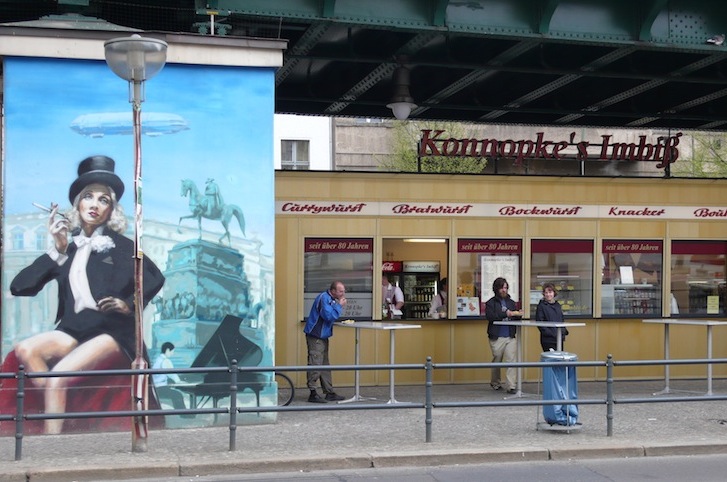
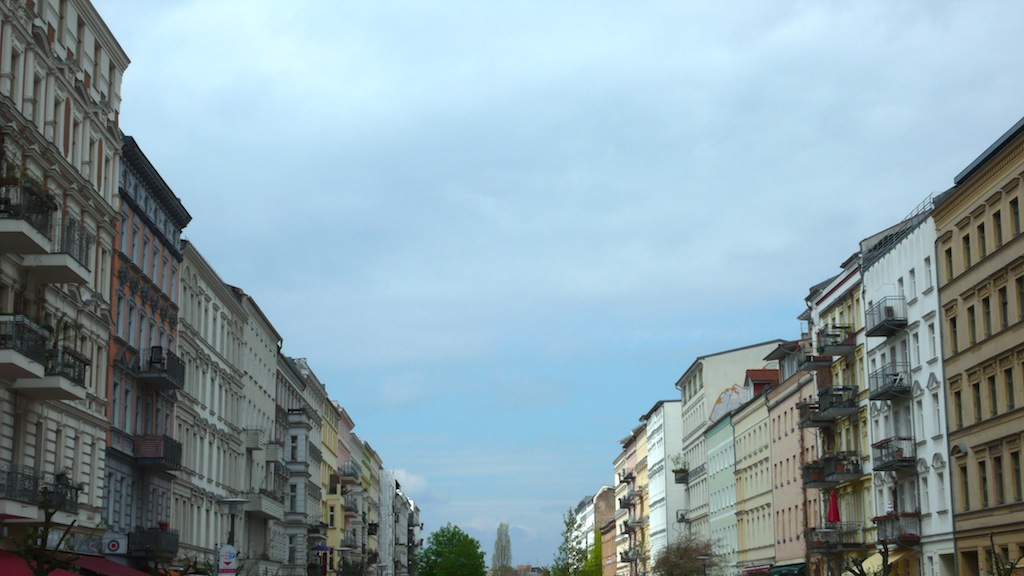
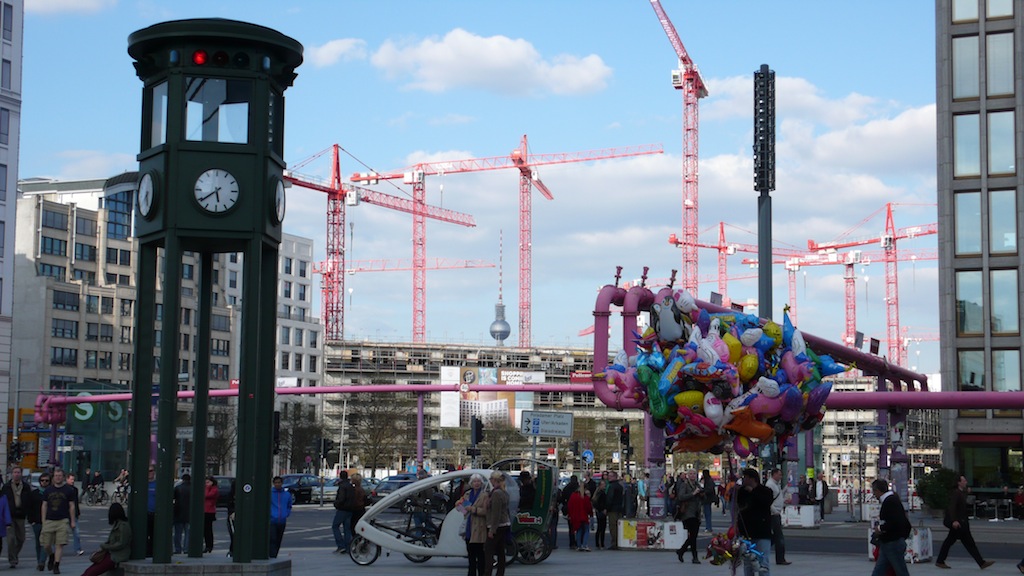
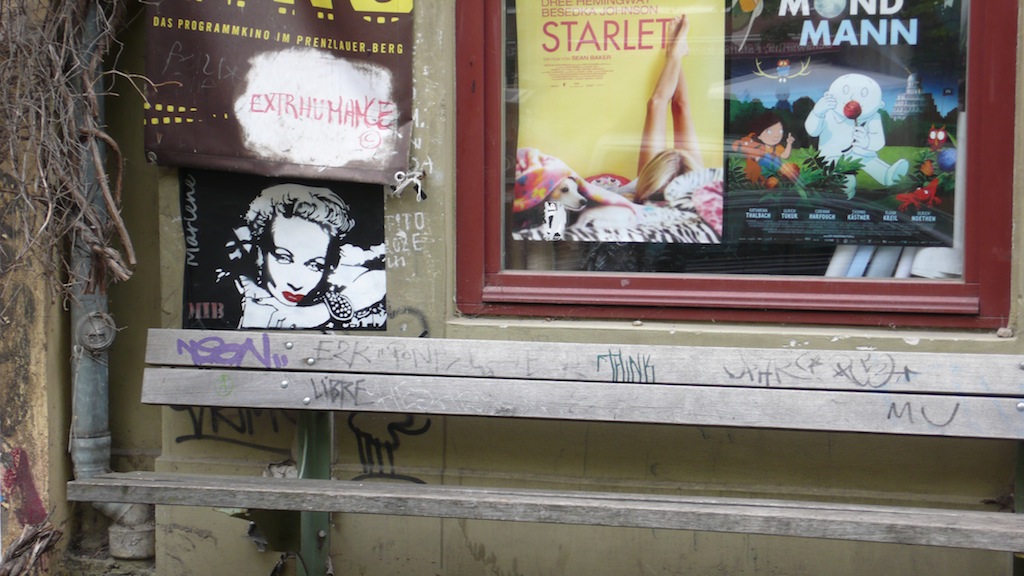
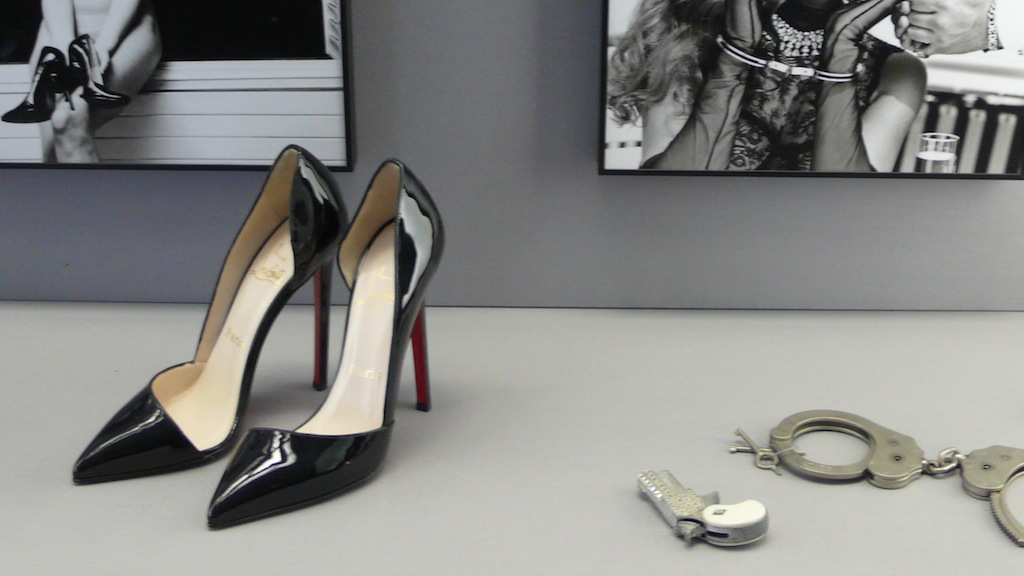
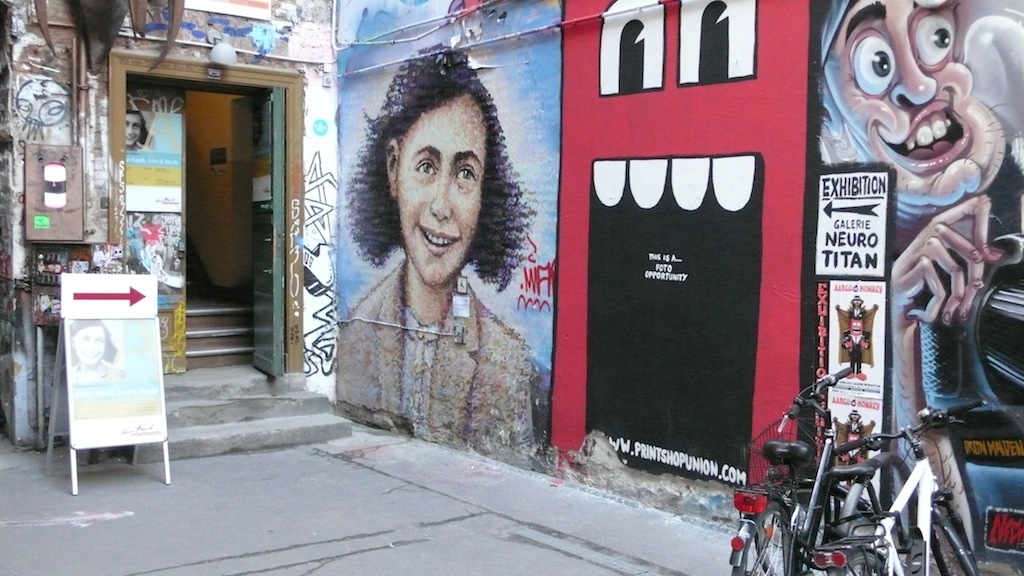
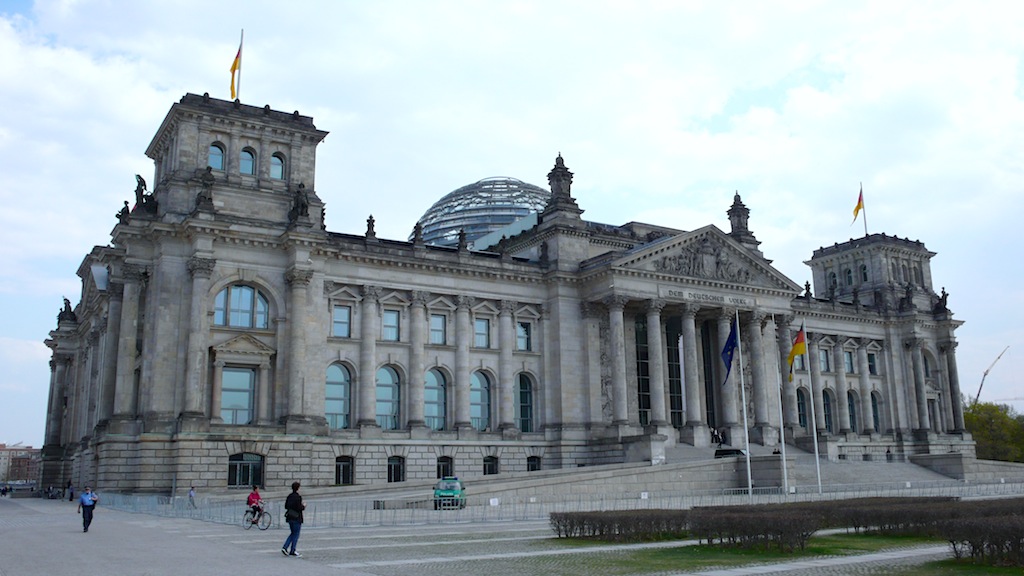
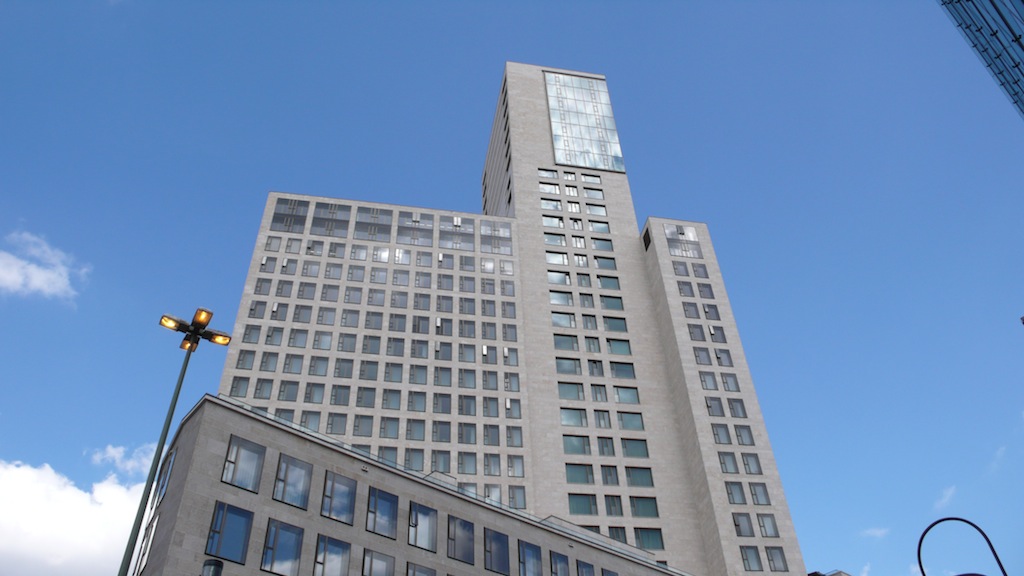
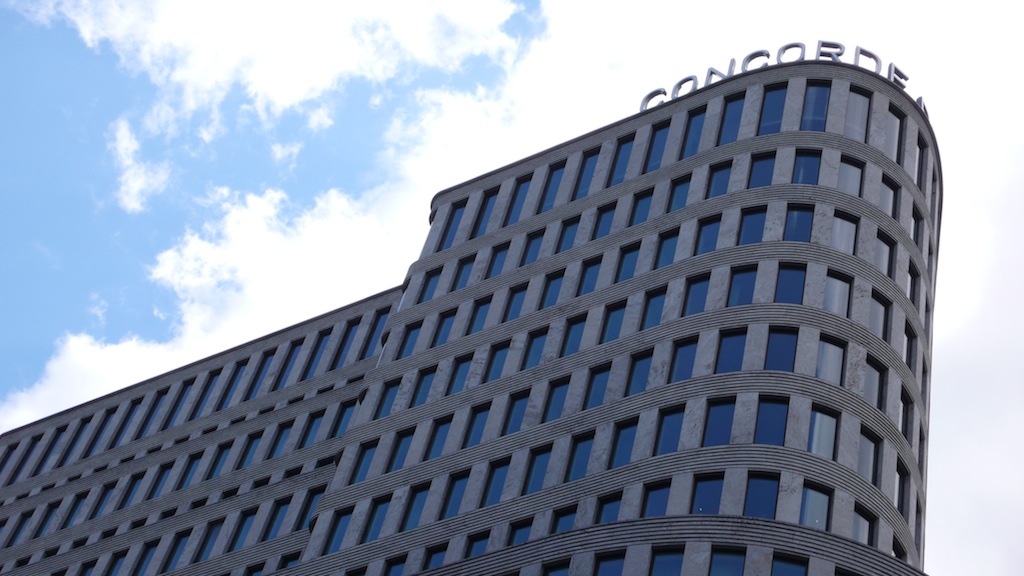
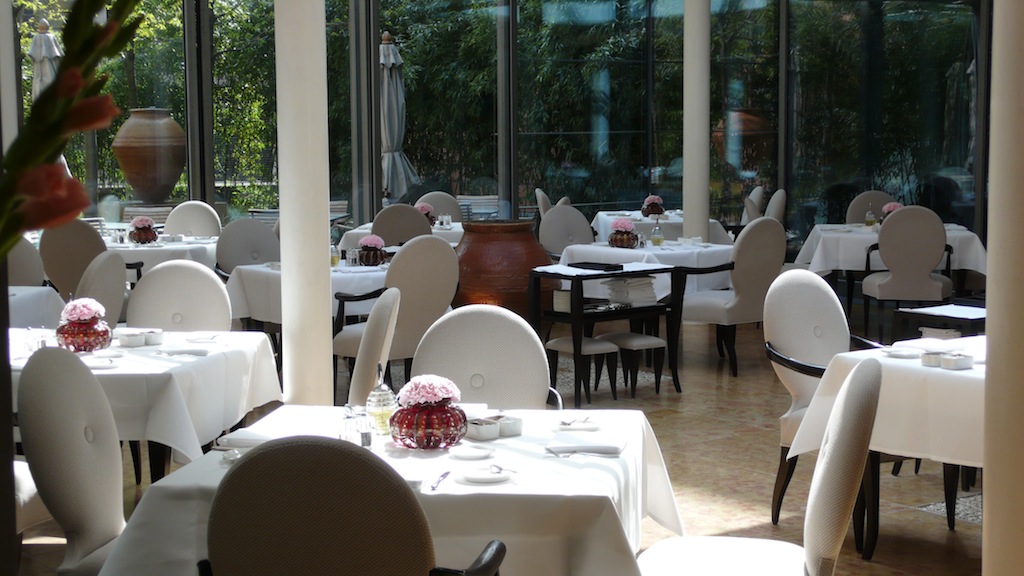
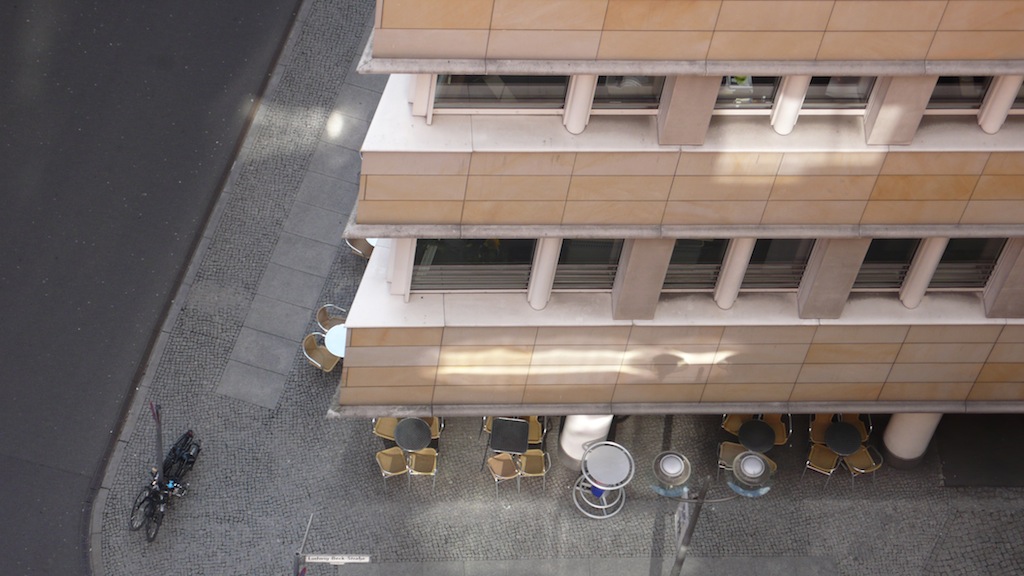
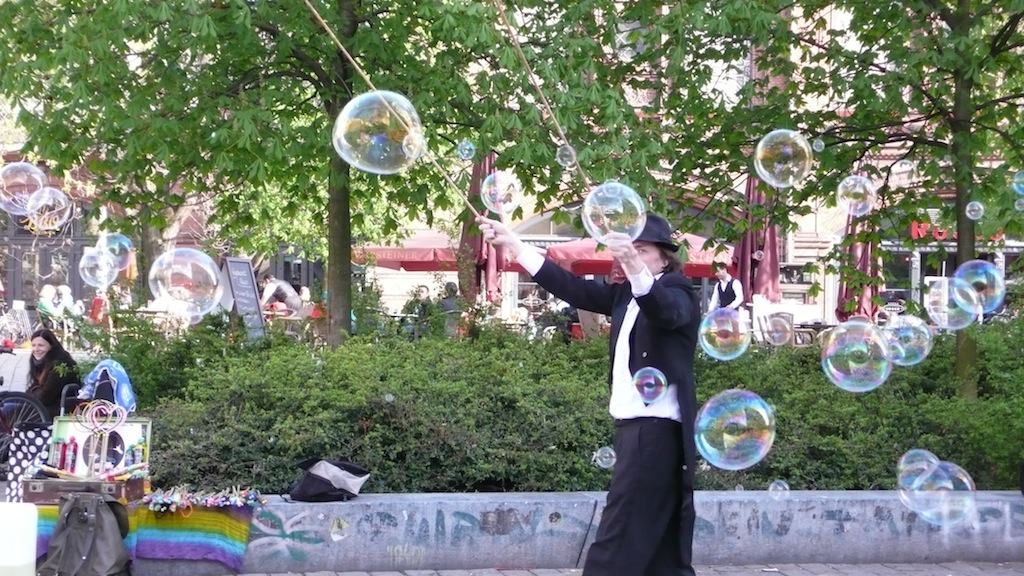
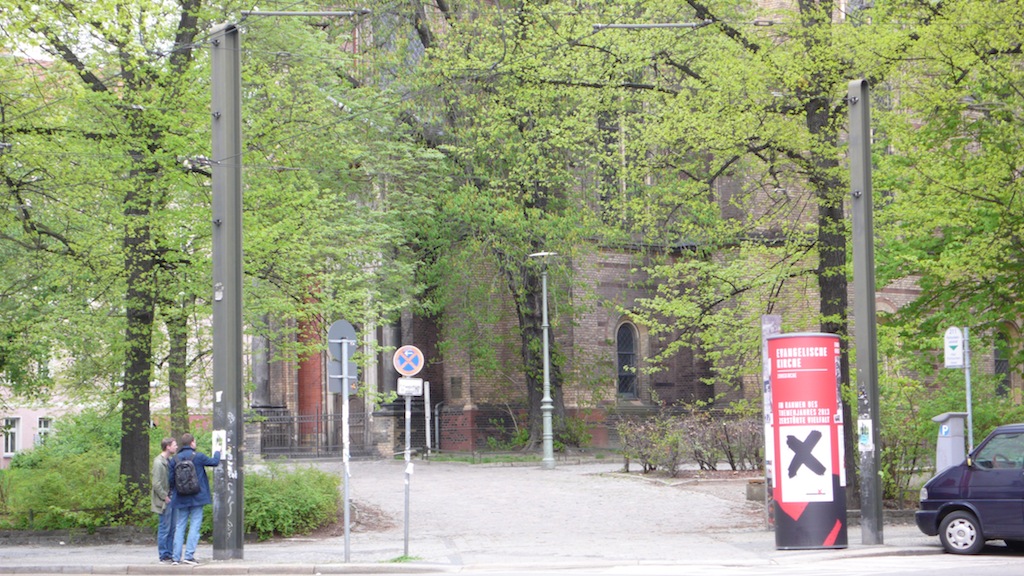
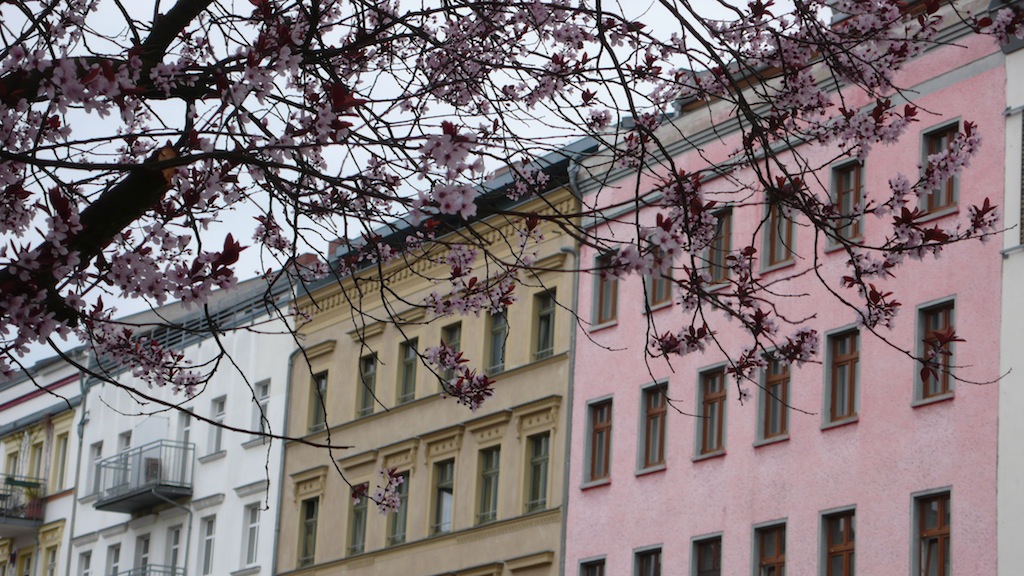

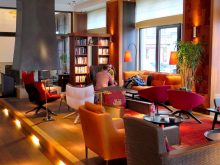
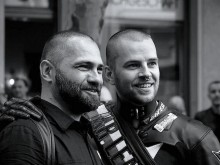
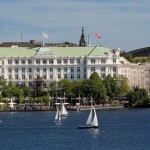

Pingback: Waldorf=Astoria Berlin, Berlin, Germany | MRNY Style & Travel
Pingback: The Mandala Hotel, Berlin, Germany | MRNY Style & Travel
Pingback: Hotel Concorde Berlin Kurfurstendamm, Berlin, Germany | MRNY Style & Travel